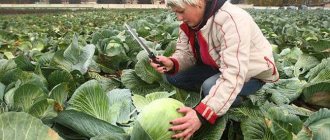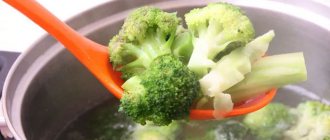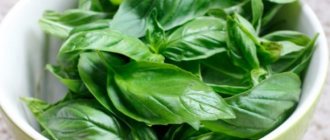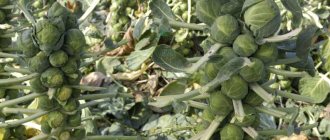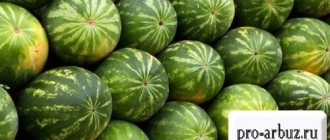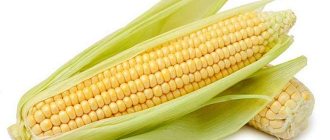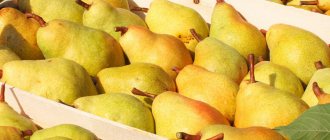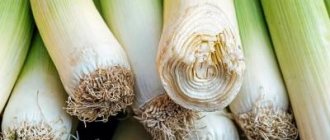How to store cauliflower in an apartment: tips
Without a cellar, you can use other ways to store cauliflower. If a vegetable grower has a glassed-in loggia where the air temperature does not drop below zero degrees, it is worth using it instead of a basement. The inflorescences are placed in a box with sand and covered with plastic film on top. In severe frosts, cabbage is insulated with an old blanket or fur coat.
In a refrigerator
The temperature in the refrigerator is close to 7 degrees Celsius, so cauliflower is stored there for a short time - about 2 weeks.
Storing cauliflower
The following actions will help extend its life:
- wash the heads with cold water;
- dry on a napkin so that no drops of water remain inside;
- wrap in cling film in 2 layers;
- Place on the bottom shelf of the refrigerator or in the vegetable compartment.
In the freezer
Housewives use 2 methods of freezing cauliflower at home - with preliminary blanching of the vegetables and without this procedure. Let's consider both options.
Freezing Blanched Cauliflower
The head is washed, disassembled into inflorescences and dipped in boiling salted water in small batches for 1–2 minutes. To prevent vegetables from losing their natural color, add a little citric acid (0.5 tsp per 1 liter) to the pan. Afterwards, the vegetables are thrown into a colander and allowed to drain. When the product has cooled and dried, it is packaged in 200–300 g bags and sent to the freezer.
Freezing fresh inflorescences
To save time, many housewives do not blanch vegetables, but freeze them fresh. First, the whole head is immersed in cool salt water for 15 minutes. This measure will help get rid of insects that are hiding inside. Then the cabbage is disassembled into inflorescences and dried on a towel. The product is packaged in plastic bags in small portions, tied tightly and sent to the freezer.
Drying
Dried cauliflower can be stored for about a year. It can be added to first courses or vegetable stews. There are two ways to dry raw materials - in a dehydrator or oven. In both cases, the head is first washed with running water and disassembled into small inflorescences.
The vegetable dryer will do everything itself; you just need to place the vegetables in special trays and turn on the device, following the instructions. To dry cauliflower in the oven, cover a baking sheet with baking paper and scatter the inflorescences onto it in a thin layer. The door is left ajar, securing it with a wooden spatula. Drying is carried out at a temperature of 50–60 degrees until the vegetables lose all moisture.
Canning and pickling
Cauliflower can be harvested for the winter. It is canned along with other vegetables - carrots, onions, zucchini, eggplants. It is also good marinated with vinegar, garlic and sweet pepper. This appetizer will certainly be appreciated by guests gathered at the festive table.
Having collected a rich harvest of cauliflower, you need to try to preserve it. Damaged heads are set aside for consumption in the near future, the rest are put in the cellar, having previously been treated with antifungal agents. How to store vegetables - in sand, in paper or in a clay mash - each gardener decides for himself. Those who do not have a basement will have to use the freezer, because at sub-zero temperatures the cabbage will definitely not spoil.
How long vegetables can be stored
In the refrigerator, storage conditions will differ from the cellar, which is optimal for keeping vegetables.
Without losing its properties, cabbage can be kept in it for no more than 2 weeks, a maximum of 3-4 with proper packaging and maintaining the desired temperature. Unpacked - lies less than wrapped in film.
Significantly extends the shelf life of freezing. At low temperatures, cabbage can be stored in the freezer for up to six months to a year.
Selection and preparation of heads of cabbage
Before you start storing cabbage at home, you need to prepare it. Medium-sized forks are best stored, tight, round, slightly flattened. If they went on sale in late autumn, therefore, they belong to late-ripening varieties intended for long-term storage. But there is a catch here too. Loose specimens (even from late hybrids) are not suitable for storage. Early and mid-ripening varieties are also not suitable. Their savings period is limited to a maximum of three months.
But not only the variety plays a role in the shelf life of fresh vegetables. Before harvesting, each fork must be carefully inspected. If cracks or damage from pests are found, they should be put aside and consumed as soon as possible. Be sure to cut off the remaining stems. The stronger the better. After all, during long-term storage, cabbage begins to grow - it forms small heads of cabbage or puts out flower stalks.
The cover leaves are also removed, leaving no more than a couple of leaves on the head of cabbage. It must be remembered that these green leaves protect the forks from damage. Therefore, there is no need to peel the cabbage until it is white. You should get smooth and beautiful heads of cabbage with several covering leaves.
Also, be sure to wash the forks in running cool water. Water should be supplied under pressure to wash away stuck insects and remaining soil or sand. A shower is best suited for this purpose. Then the heads of cabbage are wiped with a cloth, or a waffle towel, so that no moisture remains. This is the basis of how to preserve cabbage for the winter.
Harvest correctly!
Cauliflower is harvested from June to October, because different varieties differ in the length of the growing season. Moreover, due to the characteristics of ripening, late-ripening is stored better and longer. Vegetables that ripen in early and mid-summer have a low shelf life.
Harvest Features:
- cabbage inflorescences are removed from the beds only in warm, dry weather;
- They begin to harvest cabbage while it is still growing, when the heads reach a diameter of 8-12 cm and gain a weight of 300-1200 g. Overripe heads of cabbage (faded yellow, crumbly inflorescence) are not suitable for long-term storage;
- cut off the head of cabbage with a sharp wide knife, without touching the lower leaves;
- Vegetables removed from the garden are immediately transferred to a dark place. In the light, the vegetable quickly turns yellow and withers, which significantly reduces its shelf life.
Important! The shelf life of vegetables is affected by the application of certain types of fertilizers during the growing process.
For this crop, restrictions are placed on nitrogen fertilizers, since keeping cauliflower fresh for the winter will be much more difficult in this case.
Storage period and methods
The duration depends on where the cauliflower will be stored. It is necessary to preserve the integrity of the fruits: they are very delicate and easily damaged, and this will quickly lead to their rotting. The best way is hanging, which will keep the heads of cabbage intact.
It is important to observe the conditions: the place should be cool, dark and humid. This way the vegetable can stay fresh for months.
Heads of cabbage can be kept:
- in the basement, closet or cellar - the shelf life will be 2-3 months;
- in the refrigerator - no more than one month;
- in the freezer - up to 1 year;
- on an insulated balcony - up to 1 month.
How to store cauliflower in the refrigerator
Wash and dried heads of cabbage are placed in cling film or paper towels.
It is important that the fruits do not touch each other, so wrap each head separately. You can also place them in a glass jar and sprinkle with coarse salt
In the cellar or basement
With this method, temperature and humidity are of great importance: the vegetable is stored at 0°C and about 95%, respectively. Wooden boxes or boxes are chosen for storage. The heads of cabbage must be cleared of roots and leaves, placed in boxes, and covered with plastic wrap. This way they can stay fresh for 6-7 weeks.
However, it is important to regularly sort through the fruits to identify rotting processes.
You can also store the heads of cabbage in a suspended state: at the above indicators, they will be fresh for 3 weeks.
In the freezer
Freezing is the most effective method. Inflorescences can be kept in the freezer for up to one year. You can freeze both fresh and blanched heads. You can also keep the cabbage in boiling water for 3 minutes and then quickly cool it in running water: prepared in this way, it will remain white even after freezing.
Before freezing, the heads should be disassembled, then rinsed and dried thoroughly. Keep vegetables in the freezer in a separate bag. All air must be removed from the bags to ensure long-term storage.
Canning
Salting is the best method if you will use the vegetable for preparing hot dishes.
For pickling, table salt and vinegar 9% are used. The cabbage must first be blanched: to do this, boil the disassembled inflorescences for 2 minutes. Salt is added to the water; you can also add various seasonings and inflorescences: pepper, cloves, bay leaf. After the water boils, add vinegar. Then the vegetable is placed in jars and rolled up.
Canned cauliflower is stored in a dark place. Salted or pickled cabbage can be stored for a very long time. If it has not been rolled, then it can be kept in the refrigerator for 1-2 months.
Alternative Methods
If there is no cellar and space in the refrigerator, the vegetable is stored dried or canned in a dark, dry place in the apartment.
Drying
The heads of cabbage are washed, separated into inflorescences and laid out on a baking sheet in a thin layer. Preheat the oven to 60 degrees and place a baking sheet there for 2 hours. Periodically you need to check the condition of the inflorescences. When they become yellowish but elastic, remove the baking sheet. The finished drying is placed in clean glass jars, which are covered with parchment. Dried cauliflower is stored in the pantry, in the kitchen cabinet.
Canning
To prepare canning for the winter, roots and leaves are separated from the heads of cabbage. Cabbage is covered with onions and walnuts, tomatoes, peppers, carrots, beets, and garlic. To prepare the marinade, pour 9% vinegar into boiling salted water. For half a liter of water - 1 tablespoon of salt and 2 tablespoons of vinegar. Cabbage is mixed with chopped additional ingredients and distributed into sterilized jars. Then pour in the marinade and boil for 10 minutes.
See also
How to properly and for how long you can store dates at home
Canned food is prepared without sterilization. The jars are filled with brine - boiling water with 2 tablespoons of salt and sugar dissolved. Then add a teaspoon of vinegar and roll up. For taste, bay leaf, coriander, black pepper, and cloves are added to canned cabbage. Preservation is stored at home, in a dark place, at room temperature.
How to store cabbage in the cellar until spring
You can store cabbage until spring in the cellar at a temperature of −1...+1 ℃ and an air humidity of 85-95%. Creating a favorable microclimate will protect the vegetable from rotting and help preserve juiciness, taste and the whole range of nutrients.
Before storing cabbage in the cellar, thoroughly clean, ventilate and dry the room. If necessary, disinfect and destroy rodents and other pests.
There are different ways to store cabbage in the cellar. The choice depends on the amount of harvest, the size of the room and the preferences of the housewife.
A simple way to store is in boxes. Before planting, cut off the stalks (3-4 cm should be left) of all heads of cabbage; do not remove the top layer of leaves. Place the cabbage in wooden boxes that have ventilation holes. Place the workpieces in the cellar, placing them on a stand or pallet. This will protect the product from excessive moisture and protect it from rotting.
A simple and economical way to store cabbage - in boxes
An important condition is the presence of ventilation holes in the container, which will ensure good air circulation and protect the crop from rotting. Sand will help preserve maximum nutrients in cabbage
Peel the heads of cabbage from the top layer of leaves (keep 2-3) and cut off the stalk (keep 3-4 cm). Place the products in a box and sprinkle each layer with sand, which must first be dried and calcined. This method is quite effective, although dirty.
Sand will help preserve the maximum nutrients in cabbage. Peel the heads of cabbage from the top layer of leaves (keep 2-3) and cut off the stalk (keep 3-4 cm). Place the products in a box and sprinkle each layer with sand, which must first be dried and calcined. This method is quite effective, although dirty.
You can store cabbage in the cellar in the form of a vegetable pyramid. Place a pallet or knocked down boards on the floor so that there is a gap between them. This will ensure air circulation and extend the shelf life of vegetables. Place the largest and densest heads of cabbage on them, then the medium ones in a checkerboard pattern and then the small ones. The result should be a stable vegetable pyramid.
You can store cabbage in paper. This method will provide thermal insulation and protect the fruits from moisture, light and contact with other vegetables. Wrap selected whole heads of cabbage in several layers of paper and place in boxes or bags. You can store such a blank in a cellar or basement.
Cling film will help preserve cabbage. Pre-sort the vegetables and remove the top leaves. Carefully wrap each head of cabbage tightly in film (in three layers). The created vacuum will protect the vegetable from pathogenic microorganisms, pests and negative environmental influences. Place the prepared vegetables on shelves in the basement or put them in boxes.
An unusual way to store cabbage is hanging:
- Nail a wooden board in the cellar and drive nails into its side at equal distances.
- Tie a rope to the stalk of each head of cabbage.
- Hang the cabbage on nails.
Such storage will ensure constant ventilation of the vegetables and prevent them from rotting. In addition, with this method it is convenient to monitor the condition of the cabbage and use first of all the one that has begun to lose its presentation.
To preserve cabbage for a long time, choose late-ripening varieties, carefully select and sort the products, and also create a favorable microclimate for the vegetables.
Storage methods
You can store cauliflower using several methods, each of which has its own characteristics and rules. Study them and decide how you will store your cauliflower.
In a refrigerator
You can keep cauliflower fresh by using the refrigerator. How this happens: the vegetable is divided into inflorescences, after removing the leaves. Then they are wrapped in paper or cling film and placed in the refrigerator on a shelf for storing vegetables. If a long storage period is involved, the wrapper should be changed periodically.
Sometimes inflorescences can rot; it is worth keeping an eye on this and removing damaged elements. If you store cauliflower in the refrigerator, remember not to allow sudden temperature changes. Otherwise, the vegetable will turn gray and will no longer be edible.
You can extend the “life” of a vegetable if you pickle it. To do this, you need to place individual inflorescences in a jar and fill them with brine. It consists of water and salt (calculation: 1 liter of water per 1 tablespoon of table salt with top). When preparing any dish, the brine is simply washed off with water.
In the freezer
When the question arises of how to preserve cauliflower for the winter, the freezer is the safest place. Before freezing the product, you should disassemble it into inflorescences. You can blanch them or boil them in salted water, but no more than 5 minutes. After heat treatment, the vegetable must be thoroughly dried. Place it in containers or bags. It is advisable to sign the date of preparation on them.
You should periodically shake the container with the frozen product so that individual inflorescences do not stick together into one lump. It cannot be re-frozen. Therefore, it is recommended to send it to the chamber in portions. You can freeze cauliflower fresh. But this method has its drawbacks. Product damage may occur.
In the cellar
Another way to keep cauliflower fresh for a long time is to use a basement or cellar. An excellent option here is to hang the heads of cabbage. The inflorescences remain unharmed, which automatically increases the shelf life.
If you place the heads of cabbage in wooden boxes, then the forks should not touch each other. This can trigger the process of rotting. The top of the container is covered with polyethylene. You must constantly ensure that condensation does not accumulate. If there are no drawers, you can lay out the cabbage on wooden shelves. With this storage method, you will need to constantly turn the specimens over and pick off damaged leaves.
Clay wrapping perfectly preserves cabbage. You just need to coat each head with a solution whose consistency is similar to sour cream. After this, they are usually dried and hung from the ceiling of the cellar.
Cabbage is also preserved well in a layer of sand. To do this, make a hill out of it, and deepen the fruit along with the roots.
On the balcony
A good option is to store cauliflower on the balcony. The main thing is to ensure that the temperature does not drop below zero. The remaining conditions coincide with those necessary for storage in the cellar.
Adviсe
Properly grown and harvested crops last longer. The following rules will help increase the shelf life of cauliflower:
- do not abuse nitrogen fertilizers;
- collect the product in dry weather:
- cut off the heads along with a few leaves;
- before canning, soak fresh cabbages from the garden in salt water for 10 minutes to release the insects and larvae hidden inside;
- blanch in salted water to avoid bitterness;
- freeze once;
- in the refrigerator, store in the vegetable compartment (bottom shelf);
- to store forks in a basement or cellar, the cabbage should not be cut, but twisted;
- Before storing the crop in the cellar, you should check it for the absence of mold and rodents (even an inconspicuous fungus on the walls or ceiling can ruin the entire cabbage).
To extend the shelf life of cauliflower in the cellar, you can use an old recipe: before storing, dip the forks in a mash (clay + water), then dry it, or put it in boxes and cover it with sand.
How to Preserve Cauliflower Without Refrigeration. How and where to properly store cauliflower?
Overripe cauliflower cannot be stored. It can be eaten, but its taste may differ from traditional characteristics. Overripe inflorescences can be identified by the degree of their opening and distance from each other. In other cases, cauliflower is stored for quite a long time. Heads of cabbage can even ripen if they are cut at the first stage of flowering.
The nuances of storing cauliflower at home:
- The ideal option for storing cauliflower is the hanging method (the inflorescences in this position are not deformed or damaged, which increases the shelf life of the head of cabbage);
- cabbage should be stored in a dark and cool place with sufficient ventilation (due to lack of oxygen or high air humidity, the cabbage will quickly begin to deteriorate and acquire a pungent odor);
- It is not recommended to store cauliflower heads in contact with each other (the rotting process in this case may accelerate);
- You can store cauliflower inflorescences without leaves, after wrapping them in paper or newspaper and placing them in a dark, cool place (you can store cabbage in this way in the refrigerator);
- In the refrigerator, cauliflower inflorescences can be stored in cling film (in this case, it is better not to use plastic bags);
- due to sudden changes in temperature or if stored in the cold for too long, cauliflower may begin to acquire a black or dark gray tint (the taste will be bitter and it will be difficult to eat such cabbage);
- freezing cauliflower is considered the most effective way to store it (temperature changes and repeated freezing are not allowed);
- It is recommended to freeze cauliflower in the form of disassembled inflorescences (the inflorescences can first be blanched in slightly salted water, which will preserve their white color);
- If you re-freeze cauliflower, when defrosted its consistency will resemble porridge;
- disassembled cauliflower inflorescences can be sprinkled with coarse salt and placed in glass jars (the preparations should be stored in the refrigerator, and it is better to use parchment paper instead of lids);
- in the refrigerator, cauliflower should not be placed in the coolest zones (this temperature is not suitable for storing cabbage, so it should be placed either closer to the vegetable compartment, or choose another storage location);
- Only dry inflorescences should be frozen (after washing, dry them with a towel or wait for the natural evaporation of moisture).
What not to do?
Cauliflower will quickly spoil if:
Close the boxes with a tight, airtight lid.
- Grow under artificial light.
- Do not check vegetables for spoilage and rot for a long time.
- Transfer from cold to warm and back (re-freeze).
- Tie and hang in bunches.
- Place undried inflorescences in the refrigerator and freezer.
- Wrap forks in newspaper. Printing ink is very harmful to health. For storage, it is better to choose paper towels or parchment.
You should not try to preserve the flaccid heads, and also place them several at a time in deep boxes to save space on the balcony or in the basement. The cabbage will begin to actively release ethylene gas, which will accelerate wilting and lead to rapid spoilage of the crop.
Storing cauliflower at home: methods, timing, preparation for storage
Cauliflower contains a large number of valuable elements and is very beneficial for humans. It is advisable to use it throughout the year and especially in winter. However, this vegetable must be stored correctly. You will learn about the methods and features of storing cauliflower at home from the article.
Which varieties of cauliflower last longer?
In order for a vegetable to remain fresh for a long time, remain attractive in appearance and retain valuable substances, it is necessary to choose a variety that is suitable for this. It has been noted that late varieties have the longest shelf life, and early varieties have the worst shelf life.
Among late cauliflower, the best varieties are considered to be Amerigo, Asterix, Cortes, Adlerskaya winter 679, Sochi, Adlerskaya vesennyaya.
In addition to the successful choice of variety, in order to preserve vegetables well, they must be removed in a timely and competent manner. Here are some rules for harvesting:
- The fruits at the time of collection should reach a diameter of 8–12 cm and a weight of 0.3–1.2 kg.
- The heads should be carefully cut off with a sharp knife, leaving 2-3 leaves on them.
- Cut heads of cabbage must be immediately removed to a dark place to avoid exposure to the sun's rays.
- Harvesting should be completed before frost sets in - otherwise the cabbage will turn gray and acquire a bitter taste.
Early varieties must be harvested 80–110 days after sprouting, early ripening varieties - after 115–120 days, mid ripening varieties - after 125–135 days, late ripening varieties - after 145–170 days.
How to properly prepare cauliflower for storage
Before storage, quality fruits should be selected. They must meet the following characteristics:
- have no damage;
- be without signs of rot, without black spots;
- be moderate, but not completely loose.
Before planting, remove roots and leaves. If you plan to freeze, then it is advisable to blanche: boiled vegetables can last much longer.
Important! Overripe fruits with yellowed foliage should not be stored for storage.
in the freezer
The longest method of storing vegetables is freezing. To implement it, you must adhere to the following instructions:
- wash the heads.
- divide them into inflorescences.
- Place them in freshly boiled water and boil for 3-4 minutes.
- Remove the boiled inflorescences and plunge them into ice water.
- Arrange the inflorescences on a baking sheet so that they do not touch each other.
- freeze them quickly.
- Remove the inflorescences from the freezer and place them in bags, releasing the air from them, or in plastic containers.
- place the vegetable back in the freezer.
The frozen product must be prepared without defrosting in the future.
in the cellar
In a cellar or basement, vegetables can be preserved at a temperature of 0°C, humidity 95% and good air circulation in several ways:
- in boxes made of wood or plastic, covered with plastic film.
- in cardboard boxes.
- in limbo.
- in a bucket of sand.
- on the rack.
- processed with a clay mash.
important! Cabbage placed in storage should be periodically inspected and damaged specimens should be discarded. in the cellar you can store not only the harvested crop, but also the transplanted one
if frosts set in before the heads ripened, then the plant can be dug up with roots and replanted in containers, covering the lower leaves with soil. In the first 2 days they need to be watered well. optimal conditions for growth: temperature - from +4°C to +10°C, humidity - 95%
In the cellar you can store not only the harvested crop, but also the replanted one. if frosts set in before the heads ripened, then the plant can be dug up with roots and replanted in containers, covering the lower leaves with soil. In the first 2 days they need to be watered well. optimal conditions for growth: temperature - from +4°C to +10°C, humidity - 95%.
on the balcony
on the balcony, cabbage must be protected from sunlight, otherwise it will quickly deteriorate
It is also important to ensure that the vegetable is not exposed to frosty temperatures, so an uninsulated balcony will not be suitable as a place for winter storage.
shelf life
How long a vegetable will be stored depends on the method of storing it. The maximum storage periods can be found in the table:
| Storage method | Shelf life |
| in the cellar in boxes | 7 weeks |
| in the cellar in limbo | 3 weeks |
| in a clay cellar | 6 months |
| in a cellar in the ground | 4–5 months |
| on the balcony | 4 weeks |
| in a refrigerator | 2–3 weeks |
| in the freezer | 6 months |
| in the freezer after blanching | 12 months |
So, cauliflower can be stored at home in several ways. The duration of its saving depends on which method is chosen. Vegetables can be stored the longest when frozen and treated with a clay mash in the basement.
Variety selection
What varieties of cauliflower are best for storage? Depending on the ripening period, cauliflower varieties are divided into three groups: early-ripening, mid-ripening and late-ripening. The growing season of early-ripening varieties is 80-110 days, mid-ripening - 110-140, late-ripening - 150 or more.
Due to the characteristics of ripening, cabbage of late-ripening varieties has the best resistance to unnatural storage conditions , that is, keeping quality, and the worst, accordingly, of early-ripening varieties.
Therefore, those who like to eat cauliflower at any time of the year are recommended to plant several varieties of different groups . This way, already in June, it will be possible to harvest the first fresh harvest, and in the fall, prepare a sufficient amount of stored cabbage for long-term winter storage.
Harvesting cauliflower
To get a good crop harvest, it is extremely important to remove it from the garden on time and correctly - then the product will not lose its valuable taste and nutritional qualities
Optimal collection times
Check out Early, mid-early and late varieties of cauliflower
Harvesting time, as well as ripening time, depends on the variety of planted vegetable:
- For early varieties, the best harvest time is the last days of June - the first ten days of July.
- For mid-season varieties, the best time for harvesting is the end of July - beginning of August.
- For late-ripening varieties, the optimal collection time is the last days of August and September. Moreover, such varieties are stored better and longer.
If you do not remove the vegetable from the garden in time, it will begin to sprout and become unusable, which most often happens in the last days of August and autumn, during warm and humid weather.
Collection technology
In order not to destroy the grown crop, you need to know at what time and how to properly remove cabbage fruits from the garden, as well as how long they can be left in open ground.
The rules for cutting cauliflower heads are as follows:
- The harvest from the garden bed is harvested sequentially - this means that every two to three days a maturity check is carried out and the ripened cabbage is immediately harvested.
- Harvesting is carried out on a sunny day at a temperature of +8°C and above.
- The best collection time is from 14 to 19 hours.
- The heads must be cut off with a sharp knife, but under no circumstances should they be broken off.
- Cabbage is cut 3–5 cm below the head (see photo).
- When cutting, you should grab 5-6 lower leaves.
- The harvested crop is transferred to a cold and dark storage facility. If a vegetable stays under the sun for more than 5 hours, it may lose its color and taste.
Important! You should not harvest the crop immediately after rain - the cabbage will lose its inherent taste and aroma and will not be able to be stored for a long time.
Preparation. Which varieties are best stored?
The cauliflower harvest occurs in early July, and the second harvest occurs in early autumn.
If autumn comes early, the heads of cabbage are harvested prematurely and grown in the basement accordingly. This takes up to 40 days, then it is prepared for storage.
The cauliflower harvest falls in early July.
This type of cabbage, unlike white cabbage, retains its freshness and elastic structure for a shorter period of time.
To achieve the desired result, follow a number of recommendations:
- Choose elastic heads no larger than 13-15 cm in size, since they contain more valuable components than overgrown ones.
- Cut with a sharp tool, leaving a few leaves at the base.
- The composition is sorted, rejecting damaged specimens affected by disease (insects) and with signs of rotting.
Preference is given to mid-season and late varieties.
List of varieties with good keeping quality and suitable for canning:
- Autumn giant.
- Bora.
- White head.
- Flora Blanca.
- Snowball 123.
- Snowdrift.
- Cortes.
- Ameriko.
How to store cauliflower at home
Vegetables are an indispensable storehouse of vitamins for the human body. Knowing some secrets, you can eat fresh plant foods all year round. Storing cauliflower at home without losing its valuable properties is possible using several methods.
Rules for storing cauliflower at home
Harvesting
Even a novice gardener can grow and preserve cauliflower. This vegetable needs warmth, regular watering and fertilizing, but it is better to avoid direct exposure to the sun.
The traditional harvest time is from July to early August, but the characteristics of the variety play a role here. The quality and degree of preservation of the vegetable depends on the literacy of harvesting.
- cut off the inflorescences when they reach 10-15 cm in diameter;
- a ripe vegetable needs to be immediately removed from the garden;
- a tool for cutting the heads is a sharp knife: the inflorescence is grabbed along with the lower leaves;
- It is correct to store cauliflower, just picked and fresh, in a dark and cool place.
If weather conditions require immediate removal of seedlings from open soil, transplant them into a greenhouse or cellar to grow there.
Storage methods
In autumn and winter, the body needs vitamins. It’s quite possible to carry them with you from the summer
Correct harvesting technique affects how long vegetables can be preserved, which is why it is so important to cut off the inflorescences on time. You can store cauliflower at home without losing its beneficial properties in certain places and using different methods.
Cellar
To preserve cauliflower for the winter, you need to keep it in the cellar. If the temperature in the storage does not meet the required conditions, you can resort to some tricks.
- Pre-oiled and dried in clay, it will remain useful for six months. Prepare a thick solution and lubricate each head with it.
- A similar shelf life will be ensured by storing the crop in a bucket of sand.
- The containers in which you will store cauliflower should be wooden. Cover the top of the boxes with film. Another option is hanging shelves.
Make sure that condensation does not form under the shelter. Check vegetables for diseases. You can store cauliflower in the cellar for the winter for 2-3 months.
Limbo
A vegetable suspended by a stalk from a bar will last in the cellar for about a month. If you decide to resort to this method to preserve your cauliflower, when cutting, uproot the plant along with the stem. Periodically remove overgrown leaves from it.
Fridge
Cabbage can be stored in the refrigerator for two weeks.
Storing cauliflower in the refrigerator is not the best way if you want to stock up on vegetables for a long time. The product must be securely covered in the refrigerator. You can wrap it in cling film (2 layers), paper or an airtight bag - each head of cabbage will need a separate one. You can store cauliflower without losing freshness for only 2 weeks.
To properly store cauliflower in the refrigerator, you must first cut off the leaves and roots. It is necessary to keep the culture in the upper compartments.
Freezer
To store cauliflower in the refrigerator for a long time, you can choose the freezer. Culture can be placed there in any form:
- whole;
- cut into florets;
- fresh;
- steamed in boiling water.
This solution is the best way to preserve cauliflower for the winter. A well-compacted product can lie in the chamber without losing its usefulness for about a year.
Causes of cabbage spoilage
Some housewives are perplexed why cabbage can darken, turn black, turn blue or green in the freezer or refrigerator. Most often, the reason is that the rules were not followed at the stage of preparing the product for storage. This may also be due to the fact that the freezer is “weak” and does not maintain the desired temperature.
If the vegetable begins to turn black, this indicates that rotting processes have begun. It can no longer be eaten, even if the damaged areas are cut off, since the microflora penetrates deep inside and infects it entirely. Cabbage can darken in the freezer if it is sent there damp and not thoroughly dried.
If the temperature fluctuates greatly, the cabbage quickly turns gray or black, and its taste also suffers.
Storing cauliflower is more difficult than white cabbage, but by adhering to the recommendations described above, you will be able to successfully extend its life and enjoy the healthy vegetable throughout the winter. In order not to be disappointed when you see a spoiled product in the refrigerator, freezer or basement, it is important to properly prepare the product for storage and regularly monitor its condition.
Video: how to properly freeze and store cauliflower
I recommend to read:
- How to properly store sauerkraut - Sauerkraut is a product that contains a large number of useful macro- and microelements and vitamins. It is easy to prepare and is one of the favorite dishes in…
- The most popular ways to freeze chanterelles for the winter - Chanterelles have more pronounced taste characteristics when compared with champignons and oyster mushrooms. However, their significant drawback is the limited period...
- How to properly freeze peppers for the winter, raw and baked - Sweet peppers are a bright, aromatic, tasty vegetable that contains many vitamins and minerals. Using homemade preparations of this product, you can diversify the taste...
- How to properly freeze gooseberries for the winter - Gooseberries are a delicious summer berry with a huge amount of valuable microelements and a short shelf life. To preserve the beneficial properties of fruits, housewives recommend freezing them in…
- Learning to store honey correctly: where and for how long to do it - Despite the almost unlimited shelf life of honey, if kept in the wrong conditions, the taste and smell of the product may change, and signs of souring may appear. In the article...
- How to properly store food in the refrigerator and maintain order - Probably, this has happened to everyone: you open the refrigerator in search of something tasty, but, having glanced at the shelves, you close the door without profiting from anything....
- How to store natural birch sap for a long time and correctly - It is important to know not only how to collect, but also how to properly store such healthy birch sap. The collection takes place in the spring and, if you want to store the drink, it is important to do so...
